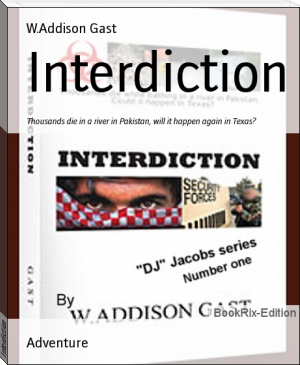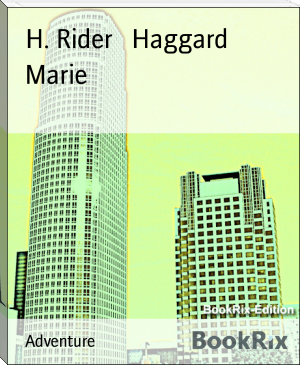Ic (en), Marie de Sade, Dr. Olaf Hoffmann [books for 8th graders .TXT] 📗

- Author: Marie de Sade, Dr. Olaf Hoffmann
Book online «Ic (en), Marie de Sade, Dr. Olaf Hoffmann [books for 8th graders .TXT] 📗». Author Marie de Sade, Dr. Olaf Hoffmann
Similarly fundamental might be sound sequences like 'lalala', 'u-u-u', 'uh u uh u uuo u', 'da da da' or 'doo wop a doo wop, shoopi doobi doo wop' and so on in sung works. Abstraction in language, or in onomatopoeia, abstraction for language formation is by no means as far away from us as it may at first seem from everyday life.
Sound poetry has also been known for a long time, which can only use language in an abstract way, but is also used completely abstractly.
There is certainly another association with the neologisms created by the German spelling reform at the turn of the millennium.
Neologisms are also long used constructs of language, especially to take new facts into account.
But also some works by Kurt Schwitters, Christian Morgenstern, Paul Scheerbart or Hugo Ball, generally from the Dadaist movement, come to mind, as do the language constructs of John Ronald Reuel Tolkien, for example, which were followed by several other authors in order to endow fictitious civilisations in their books or films with their own languages. For example, the language Klingon, which has its origin in the film series Star Trek has become more well-known and popular.
In comics in particular, sounds are also often depicted as onomatopoeic text.
This fantastic work, which is completely written in a different language, follows on from these and several other models. In this work of fantasy the emphasis lies in the complete abstraction, the actual narrative is thus immediately created in an abstract, synthetic language.
Nevertheless, there is a dictionary in the sense of a collection of words from a large vocabulary on a syllable basis with balanced word occurrences, but also a wide variability of word choice. There is also a sophisticated construction of words, sentences, paragraphs, sections, chapters.
The extensive fantastic narrative of abstract literature is supplemented in each chapter with several abstract graphics. In this way, abstract text and abstract graphics complement each other in a synthesis of word and graphics to form a consistent overall work of the abstract.
The scientific reference is in philology and linguistics. These sciences are mostly descriptive, rarely constructive. The science of languages that have not yet been studied, in this way foreign languages, is called xenolinguistics.
In earlier versions of this book (only publications in German), a quantitative analysis of the narrative including a comparison with analyses from other plants. This contribution to quantitative linguistics has been extended over time and finally published in a separate book: ‚Charakteristika quantitativer Textanalyse digitaler Bücher‘.
In the case of digital texts, especially digital books, a numerical-quantitative analysis is relatively easy to perform. For example, the relative occurrences of the glyphs used show characteristics that already indicate the language used. For example, already by comparing the distribution functions of two works it is easy to see whether the old or new rules of German orthography are used. This may apply as well to distinguish for example British English from the American dialect.
There are also these characteristic differences in the average word length in glyphs. There are interesting differences in both the language used and the vocabulary of authors.
The occurrence distributions of the words used are similar, of course. These depend on the work itself and the genre, but also on the authors. The dependence on the language used, the dialect, is trivially comprehensible.
Distribution functions for the word length in glyphs or syllables, the sentence length in words, the number of sentences per paragraph are also characteristic, analysable and comparable quantities.
Such sizes thus allow a different approach to works.
For example, cryptography relies on such quantitative text analyses or general data analyses when it comes to decrypting encrypted information without knowing the key.
Conversely, knowledge and analysis of this topic is of course also helpful in examining how efficient your own encryption methods are. Of course it is known that a quantum encryption or an encryption with a privately held binary noise key cannot be decoded without a matching key. With a classical noise key the secure exchange of the key becomes a problem. In quantum cryptography the transmission is a technical challenge. Even without an eavesdropper, the message is easily disturbed, which is equivalent to an eavesdropping attack.
Therefore it is still effective to encrypt in the classical way or simply hide information in noise. The latter is already interesting because optimally compressed digital information is practically indistinguishable from random noise if the key is not known.
A method related to cryptography is therefore the hiding of information in large amounts of data.
How else could the large amount of cat videos and other irrelevant videos on the net be explained?
They are an ideal way to integrate hidden messages that are practically impossible to find due to the sheer amount of information, if it is not known in which file the information is hidden where and how.
One problem with videos as packaging material is the format conversion and lossy compression that is often performed, both of which can easily destroy hidden information. On the other hand, if the message is contained in a digital book with a large amount of text, especially in a work of abstract literature in the form of glyphs, the information is more stable.
In an abstract work consisting of more than a million words such as Ic, a message of a few tens of thousands of words can thus easily be hidden with only moderate encryption. In principle, of course, this is also possible in more extensive penny dreadful novels, powerful epics of the genre fantasy in general, where it is inconspicuous in terms of content, when protagonists also secrete something in their own language, unknown to the audience.
The generation of texts with scripts and programs results in a different approach than descriptive linguistics. It is experimentally examined by means of examples, how which changes affect the observables of quantitative text analysis. Thus, relatively fast clues are obtained as to how artificial or abstract a text construction is, but the other way round, how written language works.
Xenophobia, this means the fear of strangers, the strange, the misunderstood, is deeply rooted in the human psyche. This can be traced back to the fact that in the early days of mankind the wandering clans or hordes were confronted with an environment against which they had to assert themselves with rather modest means. In the foreign there is therefore always a potential for danger and threat, which calls for caution or even defence. The appropriate caution turns into a phobia, a pathological personality disorder, when the initial scepticism, the initial mistrust cannot be overcome and it becomes increasingly difficult to get involved in something new and different. If caution turns into a phobia or fixed idea, it quickly stands in the way of one's own development. Only those who deal with new, external impressions and are able to reflect critically on themselves, the world and the interaction between the two sides, to find connections and to reevaluate new information can develop.
Because in the foreign there is always the chance to learn, to open up new possibilities.
Consequently, the foreign is also attractive because it offers the potential for new opportunities, a gain in knowledge, but is also the only thing capable of satisfying our curiosity, our need for intellectual activity. Whoever stews only in his own juice becomes dulled, withers away. Those who are mentally severely limited are quickly overtaxed by the new, which then causes more fear than it can enrich. The reason for the phobia lies solely in one's own limitations, not in the foreign. The confrontation with the stranger, the analysis, the acceptance of chances increases the quality of life and improves the ability to live, the ability to act flexibly in one's own life.
Of course there are also pathological excesses in the interest in the foreign beyond the advantageous acceptance and interaction. Thus, xenophilia also offers risks as well as unpleasant consequences, even obsessive-compulsive disorders. For example, the obsessive-compulsive disorder of constantly having to use pseudo-specialist words from other languages is becoming increasingly widespread, partly also in order to create the impression of special competence, whereby it is rather characteristic that the excessive use of foreign-language pseudo-specialist words and an impression of internationality is used especially by dilettantes in order to leave a professionally qualified impression while remaining as ignorant as possible. At present, this obsessive-compulsive disorder is rarely treated psychologically; instead, such disturbed personalities, especially in the management personnel, are by no means only found in larger companies.
Xenophobia and xenophilia also serve as an associative background for this work, so that the extensive narrative 'Ic' can also be understood humoristically as a satirical commentary on these excesses.
Furthermore, the narrative certainly also addresses the flight from reality of the literary genre fantasy. In general, newer works of this genre are more about the arbitrary eruption of wild fantasies without any critical questioning by the respective authors, without any concrete thematic reference, from which readers could draw more than pure entertainment or distraction.
As a kind of excessive xenoglossia, affected authors create arbitrary and irrelevant fantasy worlds outside their imagination, in which outsiders rightly ask themselves what to do with them.
Here again the cross connection to abstract art is established, where also numerous viewers ask themselves what they should do with it.
In this context, this work also offers a starting point for self-reflection, meditation and contemplation.
Techniques
The scalable vector graphics in the book are designed to complement and explain the accompanying text, as well as to serve as reflective comments. This gives the audience the opportunity for critical reflection on text and graphics, and also for contemplation and meditation on the philosophical content of text and graphics.
From a technical point of view, this EPUB has some help integrated to give the reader better access to the content. For example, there are various style sheets to choose from. With a display program, which can interpret EPUB completely, there will be such a choice. From there you can easily switch between light font on a dark background and a dark font on a light background. For your own settings, you can use the alternatively available simple style, which only highlights or arranges some structures.
Available alternative style sheets:
dark on light: Dark grey writing on light grey background light on dark: Light grey font on dark grey background (default) dark on light: Dark grey font on light grey background (without image display) light on dark: Light grey font on dark grey background (without image display) dark: Light font on dark background, coloured version yellowed: Dark font on light background, coloured version Pogo: style in the blue-violet area with a gradient as background - as the name already suggests, a little more aggressive and demanding in terms of reading pleasure blue: Blue style. dark writing on light background simple: Simple style without colour specifications, especially suitable for combination with your own specificationsAutomatic conversions of this book in the format EPUB to other formats can have various shortcomings, which can be due to errors and problems of conversion programs that are too naive and simple in design, as well as to the format into which the conversion is made. The author and collaborators of this book have no control over later manipulations or format conversions, so they have no influence on the complete availability of contents and help of such manipulated versions. They therefore strongly recommend using the unmodified original and having





Comments (0)